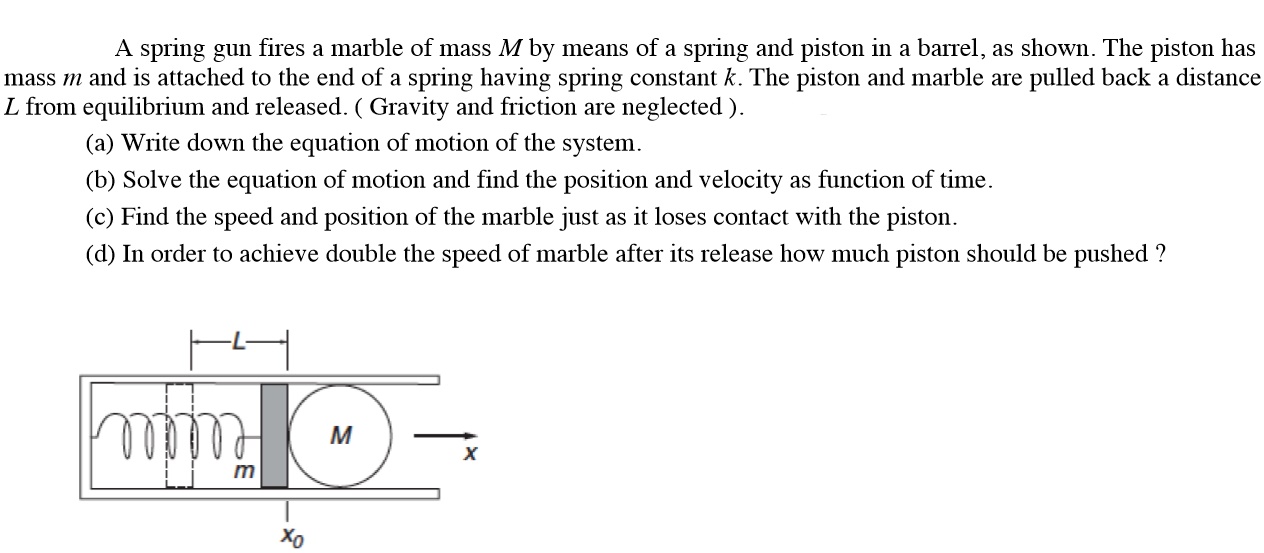At the instant of release
#1/2kL^2=1/2(m+M)v_0^2# (Energy)
here #v_0# is the initial velocity of #m+M#
after release
#-k(x-x_0) = (m+M) ddot x# (Newtonian mechanics)
and solving
#x = x_0 + C_1 cos(omegat)+C_2 sin(omegat)#
with #omega = sqrt(k/(m-M))#
The determination of #C_1,C_2# is made according to the initial conditions
#{(x(0)=x_0-L),(dot x(0) = v_0):}#
giving
#x = x_0 - L cos(omega t) + v_0/omega sin(omega t)#
Now, #m,M# trip together until #ddot x = 0# or when
#omega (L omega Cos(omega t) - v_0 Sin(omega t)) = 0# at
#t = arctan(v_0/sqrt[L^2 omega^2 + v_0^2], (L omega)/sqrt[
L^2 omega^2 + v_0^2])/omega#
The last item is left as an exercise.
NOTE:
Integration of #-k(x-x_0) = (m+M) ddot x#
First making #y = x-x_0# we have
#-k/(m+M)y=ddot y# now assuming #y = e^(lambda t)# and substituting
#(k/(m+M)+lambda^2)e^(lambda t)=0# so #lambda = pm iomega# where
#omega = sqrt(k/(m+M))# then
#y = c_1 e^(i omega t)+c_2 e^(-iomega t)#
now using the de Moivre's identity
#e^(i omega t) = cos(omegat)+isin(omegat)# after some algebric considerations we get equivalently
#y = C_1 cos(omegat)+C_2sin(omegat)# (note that #c_i ne C_i#)
and finally
#x = x_0 +C_1 cos(omegat)+C_2sin(omegat)#


